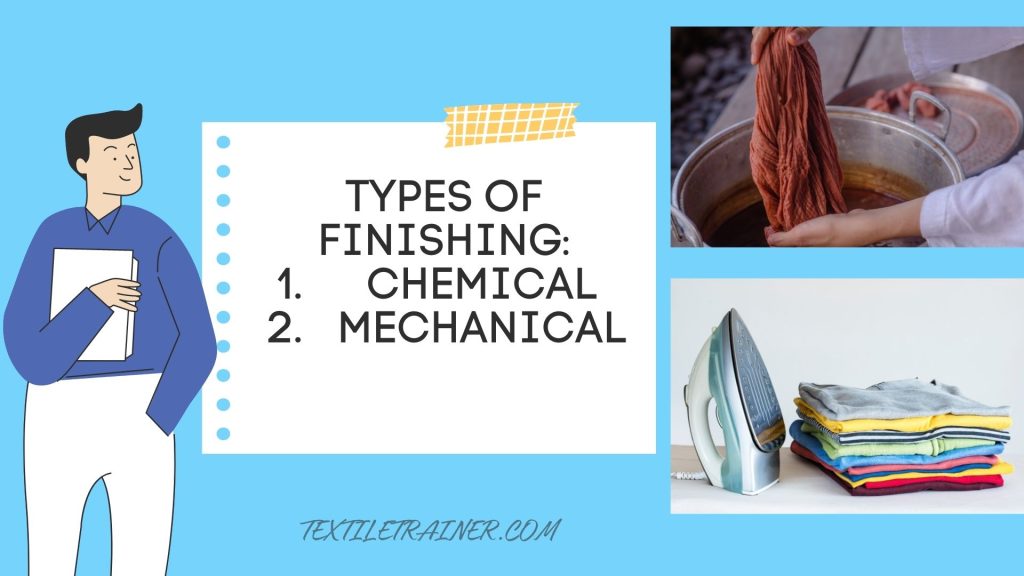Introduction:
As we go about our daily lives, we often take for granted the fabrics that make up our clothing, bedding, and other textile products. However, these fabrics undergo a complex process of manufacturing, which includes textile finishing. Textile finishing is the final step in the manufacturing process, which involves a range of techniques to improve the appearance, texture, durability, and other properties of fabrics. Textile finishing is an essential aspect of the textile industry, as it greatly enhances the quality and functionality of the final product. This article will explore the different techniques involved in textile finishing and their importance in the textile industry.
Definition:
Textile finishing is the process of improving the appearance, texture, durability, and other properties of fabrics through a range of techniques. These techniques can include dyeing, printing, coating, and mechanical finishing, and are used to enhance the quality and functionality of the final product. Textile finishing is an essential step in the manufacturing process of textiles, as it greatly improves the performance and aesthetic appeal of fabrics.
Objectives:
The objectives of this article on textile finishing are:
- To provide an understanding of what textile finishing is and why it is an essential step in the manufacturing process of textiles.
- To describe the different techniques involved in textile finishing, including dyeing, printing, coating, and mechanical finishing.
- To explain the benefits of textile finishing, such as improved appearance, texture, durability, and sustainability.
- To highlight the role of textile finishing in the textile industry and its importance in producing high-quality and functional textile products.
- To showcase the innovations and developments in textile finishing that are driving the industry forward.
Classification:
Textile finishing techniques can be classified into two main categories:
- Chemical Finishing.
- Mechanical Finishing.
1.Chemical Finishing:
Chemical finishing techniques involve the use of chemicals to modify the fabric’s properties. These techniques include dyeing, printing, coating, and treatments such as antimicrobial and flame-retardant finishing. Chemical finishing techniques are often used to improve the fabric’s appearance, functionality, and durability.
2. Mechanical Finishing:
Mechanical finishing techniques involve manipulating the fabric’s surface through mechanical means, such as brushing, shearing, and sanding. These techniques are used to achieve a specific texture or appearance and improve the fabric’s drape and feel.
Additionally, textile finishing techniques can also be classified according to their function, such as preshrinking, mercerizing, and stain-resistant finishing. The choice of finishing technique will depend on the desired outcome, the type of fabric, and the intended application of the finished product.

Importance:
Textile finishing plays a critical role in the textile industry, as it greatly enhances the quality and functionality of textile products. Here are some of the reasons why textile finishing is so important:
- Improves appearance: Textile finishing techniques such as dyeing and printing are used to add color and patterns to fabrics, making them more visually appealing.
- Enhances functionality: Finishing techniques such as coating can be used to make fabrics more waterproof, fire-resistant, or breathable, improving their functionality in various applications.
- Increases durability: Finishing techniques such as antimicrobial and stain-resistant finishing can help extend the lifespan of textiles by preventing damage and degradation.
- Improves sustainability: Textile finishing techniques can be used to make fabrics more sustainable by reducing water consumption, energy usage, and waste production.
- Drives innovation: Innovations in textile finishing techniques are driving the industry forward, creating new possibilities for high-performance and sustainable textiles.
- Adds value: Textile finishing can add significant value to textile products, making them more marketable and profitable.
Overall, textile finishing is essential in producing high-quality and functional textile products that meet the demands of consumers and industry standards. It is an important aspect of the textile industry that is constantly evolving, driven by the need for more sustainable and innovative solutions.
Conclusion:
Textile finishing is an essential step in the manufacturing process of textiles that involves a range of techniques to improve the appearance, texture, durability, and other properties of fabrics. These techniques can be classified as chemical or mechanical, and each type of finishing serves a specific purpose. Textile finishing has numerous benefits, including improved appearance, functionality, and sustainability, which are important in producing high-quality and functional textile products. Innovations and developments in textile finishing are driving the industry forward, making it an exciting and constantly evolving field. As consumers continue to demand more sustainable and durable products, textile finishing techniques will play an increasingly important role in meeting these demands.







This is my first time go to see at here and i am genuinely happy to read all at one place.
thanks too….please stay with us.
wow, awesome article post.Much thanks again. Fantastic.
please share our article…
Thanks again for the article.
thanks too….
Enjoyed every bit of your post.Really thank you! Keep writing.
ok…
I truly appreciate this blog.Really looking forward to read more. Great.
thank too…..please support us…
I am so grateful for your article post.Really thank you! Great.
keep visit our site…
Major thankies for the blog article.Really thank you! Want more.
ok, you will try.
Highly energetic article, I enjoyed that bit. Will there be apart 2?
No…
Your means of describing everything in this piece of writing is really pleasant,every one be capable of easily know it, Thanks a lot.
..thank too…..
Wow, great article post.Much thanks again. Cool.
keep visit our site….
Thanks a lot for the article.Thanks Again. Cool.
Can you tell us more about this? I’d care to find out moredetails.My blog post – everythingarcades.com
I’ll immediately take hold of your rss as I can not to find youre-mail subscription hyperlink or newsletter service.Do you’ve any? Kindly permit me understand so that Imay subscribe. Thanks.
I wanted to thank you for this wonderful read!! I definitely enjoyed every little bit of it. I’ve got you book marked to check out new stuff you post횜
Keep visit our site
That is a very good tip especially to those new to the blogosphere. Brief but very precise infoÖ Many thanks for sharing this one. A must read post!
Thanks a lot
Awesome! Its genuinely awesome piece of writing, I have got muchclear idea about from this piece of writing.
keep visit our site….
WONDERFUL Post.thanks for share..more wait .. Ö
A motivating discussion is worth comment. I do believe that you need to publish more about this issue, it might not be a taboo matter but typically people don’t talk about such issues. To the next! Many thanks!!
I loved your post.Really thank you!
Awesome article.Really thank you!
Really enjoyed this blog post.Thanks Again. Keep writing.
This is one awesome blog post. Cool.
Its truly a nice and helpful piece of information. I am happy that you shared this helpful information with us. Please keep us up to date like this. Thanks for sharing.
keep visiting our site…
I really like and appreciate your blog. Keep writing.
Great, thanks for sharing this blog post.Really thank you!
Very informative post.Really thank you! Great.
I value the blog post.Really thank you! Awesome.
Im grateful for the post. Great.
thanks too…
A big thank you for your blog article.Thanks Again. Cool.
wow, awesome article post.Really thank you! Great.
Very neat article.Much thanks again. Want more.
Looking forward to reading more. Great blog.Really thank you! Really Great.
thanks too…..
Awesome blog post.Really thank you! Really Great.
I have been checking out some of your posts and it’s pretty good stuff. I will surely bookmark your blog.
Thanks a lot for the post.Really looking forward to read more. Fantastic.
I really liked your blog.Really thank you! Great.
Thanks for sharing, this is a fantastic article post.Really thank you! Really Great.
I really liked your article.Really looking forward to read more. Keep writing.
Nice answer back in return of this query with real arguments and explaining the whole thing regarding that.
It’s fantastic that you are getting ideas from this article as well as from ourargument made here.
Thanks
wow, awesome blog post.Really looking forward to read more. Want more.
Appreciate you sharing, great article post.Thanks Again. Really Great.
Thank you ever so for you article post. Great.
I loved your blog article.Really looking forward to read more. Want more.
I am so grateful for your blog.Thanks Again. Keep writing.
I value the blog.Really looking forward to read more. Awesome.
Enjoyed every bit of your blog post.Really looking forward to read more. Much obliged.
Thanks for sharing, this is a fantastic blog post.Really thank you! Great.
Very good article.Really looking forward to read more. Fantastic.
Very informative article post.Thanks Again. Cool.
I think this is a real great article.Much thanks again. Great.
Thanks again for the blog post.Thanks Again.
Thanks for the blog post. Cool.
Hey, thanks for the blog. Great.
I am so grateful for your article post.Really thank you! Keep writing.
I loved your blog a great deal. I’ll return to view it again.
Very good post.Thanks Again.
I value the post.Really thank you! Want more.
A big thank you for your blog post. Fantastic.
I truly appreciate this blog.Really looking forward to read more. Cool.
Im thankful for the article. Will read on…
Really enjoyed this post.Really thank you! Fantastic.
Awesome blog post.Really thank you! Keep writing.
wow, awesome article post.Much thanks again. Really Great.
I am so grateful for your blog article.Really looking forward to read more. Keep writing.
Awesome blog.Much thanks again.
Wow, great article post.Thanks Again. Want more.
I value the post.Much thanks again. Great.
Im thankful for the blog article. Keep writing.
Enjoyed every bit of your blog article.Really thank you! Really Great.
Appreciate you sharing, great article.Thanks Again. Really Great.
Wow, great blog post.Really looking forward to read more. Really Cool.
A big thank you for your blog post.Thanks Again. Keep writing.
I truly appreciate this article. Will read on…
I really liked your article. Awesome.
I truly appreciate this post.Really looking forward to read more. Will read on…
Thank you ever so for you blog.Much thanks again. Fantastic. click here
Thanks again for the article post. Want more.
Thanks a lot for the blog. Cool.
Thanks again for the article post.Much thanks again. Keep writing.
Say, you got a nice blog.Much thanks again. Keep writing.Loading…
I loved your blog article.Thanks Again. Really Cool.
Really appreciate you sharing this blog post.Really thank you! Awesome.
Hey, thanks for the post.Thanks Again. Awesome.
Hey, thanks for the blog article. Cool.
Im thankful for the article post.Really thank you! Awesome.
I value the post.Thanks Again. Really Cool.
There is visibly a bundle to find out about this. I presume you ensured great factors in functions additionally.
Thanks a lot for the blog article.Much thanks again. Fantastic.
Say, you got a nice blog. Will read on…
Major thanks for the blog post.Really looking forward to read more. Really Cool.
I really like and appreciate your blog post. Fantastic.
I also conceive thence , perfectly indited post! .
Thank you ever so for you blog post.Much thanks again. Really Great.
Enjoyed every bit of your blog article. Awesome.
I really enjoy the blog.Thanks Again. Keep writing.
I loved your article post.Much thanks again. Much obliged.
Very informative post. Keep writing.
Very informative blog post.Thanks Again. Awesome.
Thank you ever so for you blog. Cool.
I value the blog.Much thanks again. Fantastic.
I loved your blog.Much thanks again. Awesome.
Really enjoyed this blog post.
I loved your blog.Much thanks again. Really Cool.
Really informative post. Will read on…
Really enjoyed this blog.Thanks Again. Great.
Awesome blog.Really thank you! Really Great.
Very informative blog post.Really thank you! Want more.Loading…
Thanks
My relatives always say that I am wasting my time here at net, but I know I am getting know-how all the time by reading thes nice articles or reviews.
I cannot thank you enough for the article post. Fantastic.
Thanks too
I value the post.Thanks Again. Will read on…
Thanks for the blog. Fantastic.
Major thankies for the blog.Really thank you! Really Cool.
Really informative blog article.Thanks Again. Awesome.
I really liked your article.Thanks Again. Great.
Hey there! This post could not be written any better! Reading through this post reminds me of my old room mate! He always kept talking about this. I will forward this write-up to him. Pretty sure he will have a good read. Many thanks for sharing!
What’s up, just wanted to say, I loved this post.It was inspiring. Keep on posting!
Thanks
I loved your article.Thanks Again.
Thanks again for the article.Really thank you!
Thanks so much for the post. Really Cool.
Thanks for the article post.Thanks Again. Great.
I truly appreciate this blog.Thanks Again. Great.
I really liked this blog post, thanks for creating it. I’ll return for more. See you again!
Thanks again for the article.Really thank you!
Thanks for the blog post.Really thank you! Really Cool.
Really appreciate you sharing this blog article. Awesome.
Im thankful for the blog post.Thanks Again. Fantastic.
I truly appreciate this blog post.Really thank you! Great.
I loved your article.Really thank you! Cool.
Looking forward to reading more. Great blog post.Much thanks again. Fantastic.
Say, you got a nice article.Thanks Again. Keep writing.
Thanks for the blog article.Really thank you! Cool.
wow, awesome article.Really looking forward to read more. Fantastic.
Looking forward to reading more. Great blog post. Will read on…
A big thank you for your blog.Much thanks again.
Awesome blog post.Thanks Again.
Kerassentials are natural skin care products with ingredients such as vitamins and plants that help support good health and prevent the appearance of aging skin. They’re also 100% natural and safe to use. The manufacturer states that the product has no negative side effects and is safe to take on a daily basis.
Enjoyed every bit of your blog post.Really thank you! Awesome.
Thank you for your blog article. Much obliged.
A big thank you for your blog.Much thanks again. Really Cool.
Wow, great blog article.Thanks Again.
Enjoyed every bit of your blog article.Really looking forward to read more.
I value the blog post.Much thanks again. Want more.
Very informative blog.Really looking forward to read more. Really Great.
Say, you got a nice blog.Really looking forward to read more. Fantastic.
I really enjoy the blog post.Really looking forward to read more. Keep writing.
I really enjoy the article post.Much thanks again. Great.
wow, awesome blog article.Thanks Again. Great.
Very informative article post. Will read on…
I truly appreciate this blog.Much thanks again.
wow, awesome article.Thanks Again. Will read on…
Fantastic blog. Will read on…
A big thank you for your post.Really looking forward to read more. Awesome.
I appreciate you sharing this blog post.Really looking forward to read more. Want more.
Very neat blog.Much thanks again. Keep writing.